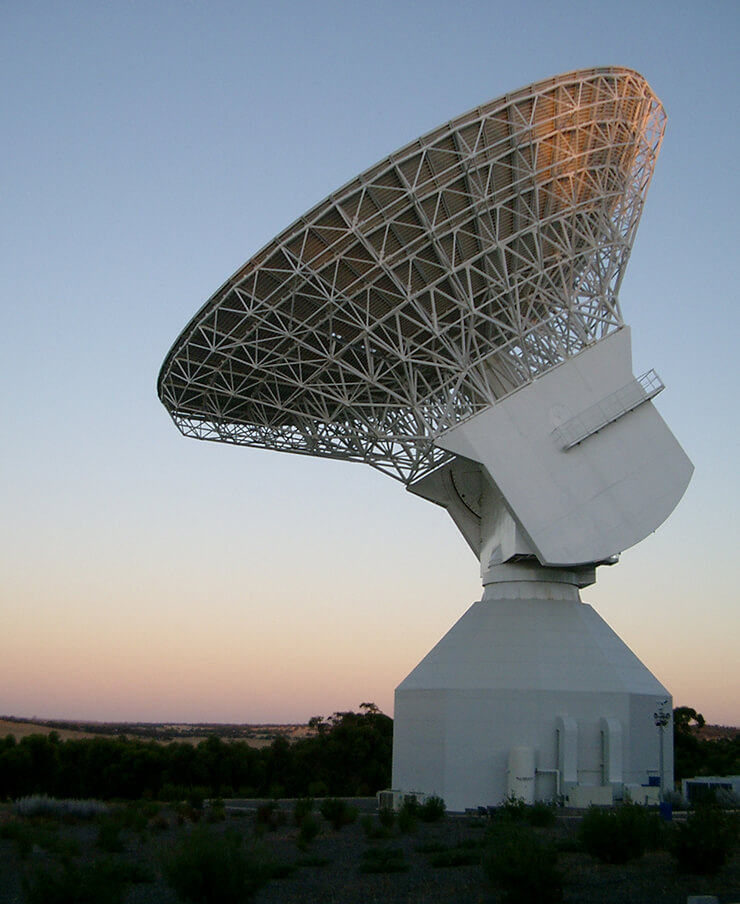Connecting your world
The Inmarsat-6 (I-6) satellites represent a momentous change in the capacity and capabilities they will deliver to our multi-dimensional Inmarsat ORCHESTRA network to meet the connectivity demands of our global mobility, government and IoT customers into the 2040s and beyond.
Built in the UK and assembled in Toulouse by Airbus Defence and Space, the I-6 satellites are the world’s most technologically advanced commercial communications satellites ever launched. They are also our first hybrid satellites, featuring both L-band (ELERA) narrowband and Ka-band (Global Xpress) high-speed broadband communications payloads.
On 22 December 2021, I-6 F1 launched from the JAXA Tanegashima Space Centre in Japan with Mitsubishi Heavy Industries onboard its H-IIA Launch Vehicle No. 45 (HIIA F45).
Innovation in communications
The I-6 satellites form part of our visionary and fully funded technology roadmap, which will see a further eight satellites launched by 2025, including two for Arctic coverage, and a ground network expansion like no other. Together they will power the geostationary Earth orbit (GEO) component of Inmarsat ORCHESTRA and enable technological innovations in existing and new industries.
Each I-6 satellite features:
- 20 Ka-band spot beams that can be directed to meet customer demand second-by-second
- 50% more L-band capacity than the entire 1-4 generation of ELERA satellites
- 99.9% L-band capacity to ensure the continuation of our critical maritime and aviation safety services
- I-6 F1 will provide coverage over the Indian Ocean and will be supported by two new ground station antennas in Western Australia – Perth and Merredin
That means greater capacity and coverage, greater speeds and a greater portfolio of innovative connectivity solutions for our ELERA and Global Xpress (GX) network components of Inmarsat ORCHESTRA. And because the I-6 satellites, like all Inmarsat spacecraft, are backward-compatible with existing terminals, our mobility and government customers can benefit from new advances now and into the future.
Inspiring new possibilities
Our L-band services have long been synonymous with 99.95% reliability, resilience and availability, providing the vital maritime and aviation safety services that protect millions of seafarers and airline passengers every day, as well as supporting Internet of Things (IoT) applications.
Now, with our enhanced narrowband ELERA network, underpinned by the I-6 satellites, we are investing in the next wave of world-changing technologies to 2040 and beyond.
The result; the fastest L-band speeds available to customers, the smallest low-cost terminals and a more connected, sustainable and safer world.
- Think commercial UAVs for disaster response and medical deliveries
- Autonomous transport; monitoring of the oceans and supporting greener energy solutions
- Intelligence, Surveillance and Reconnaissance (ISR)
- Industrial and agricultural IoT connecting billions of machines and devices.
And that’s not all. The I-6s will deliver double the capacity per beam and double the power of our previous Inmarsat-4 (I-4) generation of L-band satellites, which means that much more data can be carried over the same amount of bandwidth. Add unlimited beam routing flexibility to match demand on a second-by-second basis, even in congested hotpots, and the I-6s will be a catalyst for ELERA’s capabilities.
Meeting always-on demand
The high-speed broadband service of choice for governments, shipping companies and airlines alike, Global Xpress has taken global, mobile satellite communications to the next level to power digitalisation and entirely transform whole industries.
- Fleet Xpress is already delivering next-generation digital services to over 13,000 maritime vessels for operational efficiency, regulatory compliance and crew welfare
- GX Aviation is keeping passengers flying with some of the world’s leading airlines connected at 30,000 feet - from Lufthansa, Qatar Airways and Singapore Airlines to Air New Zealand, Virgin Atlantic and AirAsia
- Jet ConneX for business aviation is ensuring a best-in-class experience for Principals on any international flight path.
- And for governments the world over, including the U.S., U.K., Canada and Australia, Global Xpress offers secure end-to-end wideband connectivity wherever the mission arises - on land, at sea or in the air – and is the first global commercial network that is interoperable with MILSATCOM Ka-band networks.
The I-6 satellites are set to deliver more capacity to key regions than the entire first-generation of GX satellites and even more flexibility, with 20 Ka-band steerable spot beams precisely directing additional capacity where and when it is needed, in real time.
That means busy aviation and shipping routes can expect always-on connectivity no matter how congested the traffic, and governments can continue to receive mission critical connectivity when it counts.
The I-6 story
- Road to GEO
- Testing I-6
- Building I-6
- What is I-6?
- Why I-6?

